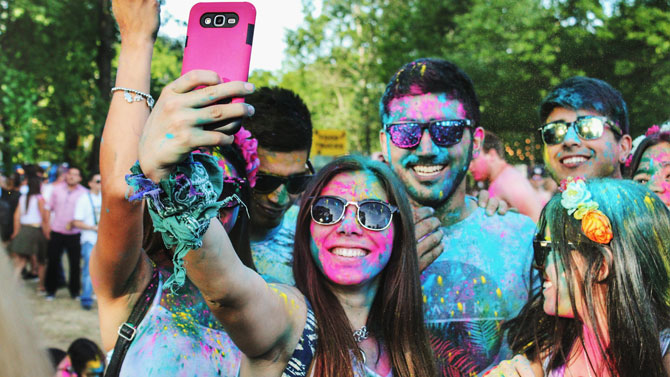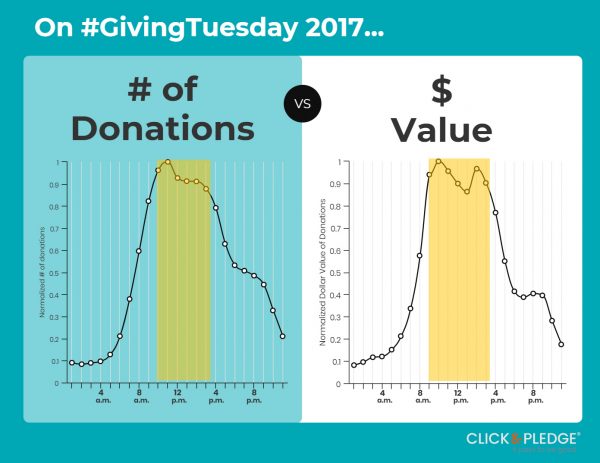#GivingTuesday is, inherently, a social media powerhouse. After all, there is a hashtag in its name. Within a week’s span, Giving Tuesday received over 1 million social mentions. Those were viewed 21.7 billion times around the globe.
According to the 2018 Global Trends Giving Report, social media is the No. 1 communication tool that inspires donors to give. But that doesn’t mean you should just start posting willy-nilly. Instead of crossing your fingers for more retweets this Giving Tuesday, keep in mind these three findings to guide your social media plan.
Fact #1: Donors Prefer Charities With “Beautiful” Recipients
We’re not talking about Beyoncé, here. However, recent findings from researchers at Washington University in St. Louis show that people use their gut instinct to donate to charities rescuing more “beautiful” animals, rather than less beautiful animals that are highly endangered.
What This Means
The researchers said these studies exposed a negative correlation between beauty and neediness. That means the ones who need the charity most are often not the ones to receive it. In turn, organizations with less “beautiful” causes are the ones more likely to receive diminishing returns from their fundraising efforts. So, eye-grabbing aesthetics are of utmost importance when communicating your organization’s mission.
It’s also true the research indicates that participants chose the less beautiful subjects when they were given more time to process their decision. But, again, this is social media; it’s a pretty impulsive space, folks. Most donations inspired by social media are less than $1,000, and one-third are less than $100. In terms of purchase decision-making, social media donors usually require very little information research to make their choice.
How To Capitalize On It
- USE GOOD IMAGES AND VIDEO. What do I mean by “good?” Well, I don’t mean a bunch of random clip art that’s been edited in Microsoft Paint. Better put, focus on projects that offer the best opportunities for visuals with good composition.
- Focus on one particular project or fund. Not only will this help to keep your visuals consistent throughout your Giving Tuesday social media plan, it will also make your ask more concrete and demonstrative.
- For more specifics, there are myriad ways for images to maintain good composition. For those of us who didn’t go to art school, you can brush up on some of these photography guidelines for starters. We also cover good video composition in our Facebook Live series.
Fact #2: It’s Not (All) About The “Likes”
We’ve talked about “slacktivism” before — small-scale societal contributions — and it often gets a bad reputation. Instead of lumping all slacktivist activities into one category, some slacktivist social media activities are more impactful than others.
For example, in a recent research paper titled “Exploring Slacktivism,” researchers found that public social media participants — those who are more likely to comment or “like” a social media post or ad — were less likely to get further involved with a charity. However, private social media participants — those who were influenced by a post to make a donation or conduct peer-to-peer fundraising — were 11% more likely to perform subsequent behaviors than their public counterparts.
What This Means
Just because your post doesn’t receive likes or comments doesn’t mean that it’s less effective. It’s more important to go beyond the vanity metrics and review whether your social media posts inspired viewers to take action.
While Giving Tuesday donors are less likely to become further involved or make recurring donations, there’s still more value to these participants than those who solely pad your vanity metrics.
How To Capitalize On It
- Don’t hedge your ask. Be direct with your social media posts. Instead of asking your followers to merely “learn more” about your charity, Giving Tuesday is the time to be explicit in your request for donations.
- Make it easy for people to donate directly from your social posts. That means your donation forms need to be ready for any device on which a viewer may see your post. Having a simple, mobile-friendly form directly linked from your post is crucial.
- Make sure to thank your Giving Tuesday donors via email. That action alone will increase your chance of converting them into recurring contributors later, when you follow up with your next fundraising campaign ask.
Fact #3: Most Donations Occur During Regular Business Hours
Most people habitually use social media; whether they’re waiting in line or bored at work, they log into Facebook and scroll through their feed without giving it a second though. Most smartphone owners check their notifications within 15 minutes of waking up. We dug into our own analytics at Click & Pledge to find that Giving Tuesday is no exception.
The graph below shows that, through the Click & Pledge platform, most Giving Tuesday donations occur between 10 a.m. and 3 p.m. — a few hours bordering lunchtime. But, if you look further, you’ll notice that gifts are a constant throughout the regular work day.
What This Means
Some people say they don’t check their social media accounts during work. Those people are either lying, or they are incredibly productive. Kudos to the latter. On any given day, it’s important to keep your social presence up. But that’s even more important on Giving Tuesday, when your organization will need to post throughout the day to maintain visibility.
How To Capitalize On It
- Twitter is your best friend for micro-updating your followers. Consider working with a local celebrity or industry influencer to take over your Twitter account for a day or for a few hours to boost visibility.
- Engage, engage, engage. If someone replies to your post, don’t ignore it. A simple like or retweet might suffice. But thoughtful, considerate replies — even to negative comments — show followers that your organization is attentive and listening to what they have to say.
- Encourage peer-to-peer fundraisers to regularly post on social throughout the day to encourage giving through their social networks. Donors are generally more motivated to give by personal connections than branded pages.
- Participate in popular Twitter hashtags to be part of the conversation. #GivingTuesday is the obvious one, but #donate, #nonprofit, and #unselfie are safe bets. Popular hashtags might also vary depending on your organization’s sector.



